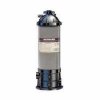There is an old koi saying that you are not a koi keeper, but rather a water keeper. Keep great water and the koi take care of themselves. The general rule of thumb is 10 gallons per inch, but you have to consider how big the koi will eventually get so assuming a full size adult is on average 25 inches, then you are looking at 250 gallons per adult koi. But as with most things in life, the "general rule" doesn't really tell the whole story or cover every situation. It all comes down to your ability to maintain good water quality. And for this there are many other considerations. The quality of filtration is one of the biggest factors. The ability of the filter to remove solid waste as well as grow enough beneficial bacteria to convert all the ammonia produced by the koi. Also, you need to consider aeration and circulation, these are crucial elements to healthy water. Another big factor is feeding. If you over feed with a low quality food, then you will have more waste to deal with, but if you feed lightly with a high quality food, then it will be easier to maintain good quality water. And lastly is the X factor....namely you. How much time do you want to spend keeping your water and what do you want from your koi in terms of growth and development? A heavier stocking density (50-100 gallons per koi) means more water changes, more testing, more treatments, more time and probably lower overall growth and color development. A lighter stocking density (400-500 gallons per koi) means less maintenance, less work, and overall better growth and color. High end hobbyists raising koi for competition will often stock one koi per 800 to 1000 gallons.



 If I put my monster tank on the floor, I rather put another monster tank on top of it.
If I put my monster tank on the floor, I rather put another monster tank on top of it. 
